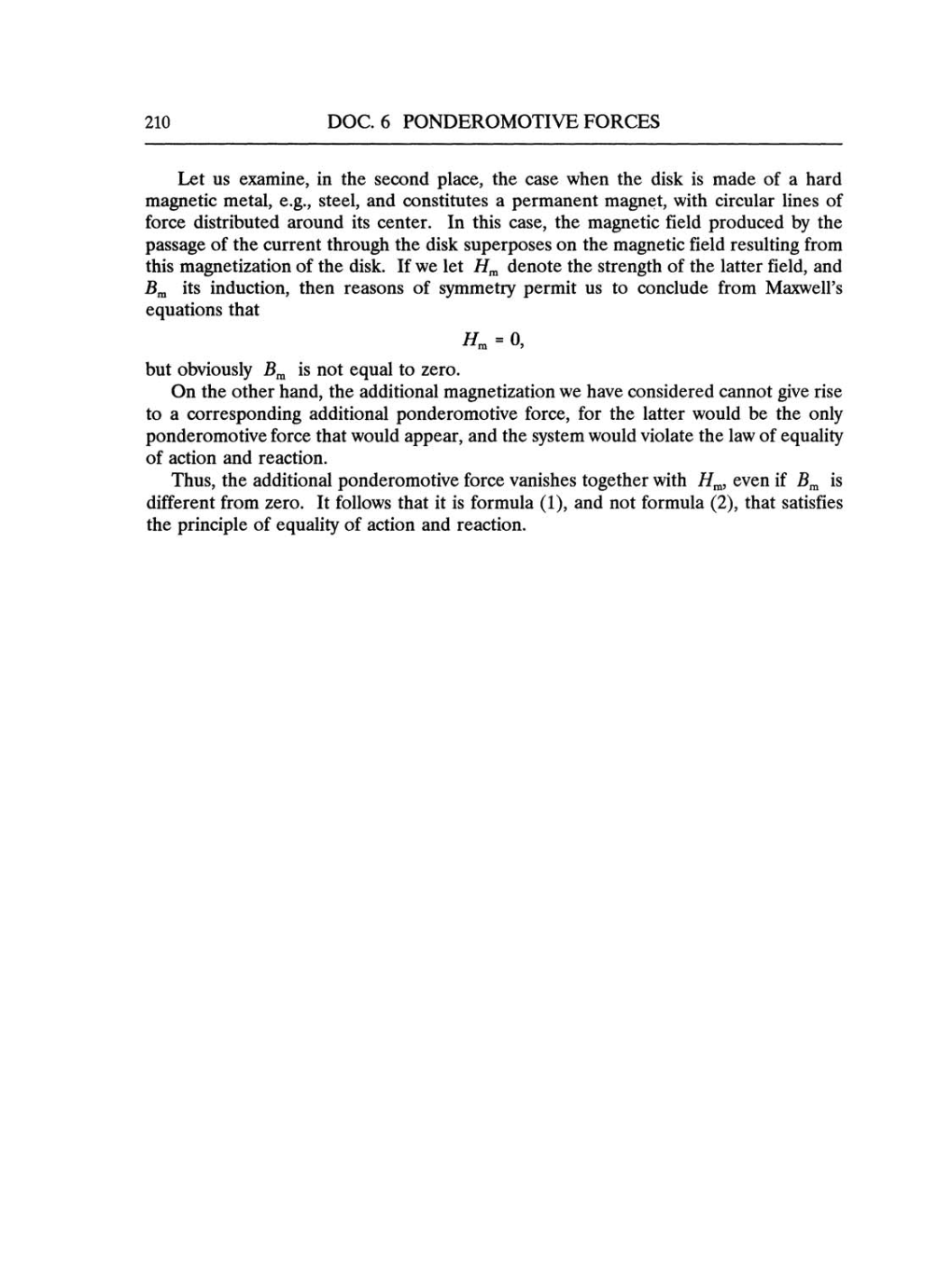210
DOC.
6
PONDEROMOTIVE FORCES
Let
us
examine,
in
the second
place,
the
case
when
the
disk
is
made of
a
hard
magnetic
metal,
e.g.,
steel,
and constitutes
a
permanent
magnet,
with circular lines
of
force
distributed around
its center.
In
this
case,
the
magnetic
field
produced
by
the
passage
of the
current
through
the
disk
superposes
on
the
magnetic
field
resulting
from
this
magnetization
of the
disk.
If
we
let
Hm
denote the
strength
of the latter
field,
and
Bm
its
induction,
then
reasons
of
symmetry
permit
us
to conclude from Maxwell's
equations
that
Hm
=
0,
but
obviously
Bm
is
not
equal
to
zero.
On the other
hand,
the additional
magnetization we
have
considered
cannot
give
rise
to
a
corresponding
additional
ponderomotive
force,
for the latter
would
be the
only
ponderomotive
force
that
would
appear,
and the
system
would violate
the
law
of
equality
of
action
and reaction.
Thus,
the additional
ponderomotive
force
vanishes
together
with
Hm,
even
if
Bm
is
different
from
zero.
It
follows
that
it
is
formula
(1),
and
not
formula
(2),
that
satisfies
the
principle
of
equality
of
action
and reaction.
